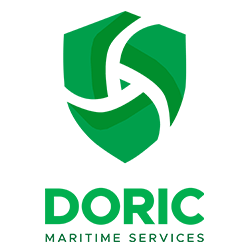Seas can be as dangerous a territory as your local hood. When onboard, your ship can be targeted by pirates, gangs, thieves, and so much more. The inability to see incoming threats may concur losses to families, businesses, trades, special contracts, merchants, energy and goods. A risk assessment is crucial to ensure the ship arrives safely to dock.
Even hazards come with their surplus risks. To navigate these complicated overlapping risks, we need a detailed plan. And this plan is risk assessment. A risk assessment is mandatory for all ships to have undergone. However, which measures they choose to take is on them.
Paragraph 1.2.2.2 of the ISM Code (International Safety Management Code) states: “Safety management objectives of the company should…establish safeguards against all identified risks”
Thus, the 2010 amendment to the ISM code has mandated a mandatory risk assessment for all ships.
Table of Contents
Executing Risk Assessment at Sea
There are different guidelines available for carrying out a maritime security risk assessment. However, the most credible guideline is the 5-step maritime security assessment. They are:
- Hazard Identification
- Risk Estimation
- Control Risks
- Identify Benefits & Take Action
- Monitor Risks
Identification of Hazards
You can’t assess the hazard if you don’t even know what it is. So identify it. Identification can get confusing, as the difference between hazard and risk can be minute.
One example of a hazard may be a ladder that may cause the risk of falling. A hazard is a substance or situation that may harm anyone or anything. Risk refers to the probability that something may cause harm. The risk level can change depending on the situation the hazard is in.
Risk Estimation
The risk may be there. How do we remove it, then? Or do we? Because risk is everywhere. Which measures should we take when the risk level is moderate? If you can’t tell yet, we need to calculate the risk level, how much of it we can deem acceptable and what precautions to take. Therefore, we need to estimate risks.
Risk, according to IMO, may relate to ‘the combination of the frequency and the severity of the consequence.’
Frequency is ‘the number of occurrences per unit time (e.g. per year)’ in this context, while the consequence is ‘the outcome of an accident’.
Some companies use the risk matrix to determine its severity. Or, they use Risk= Frequency x Consequence.
Controlling the risks
Now that you have estimated the risks, you need to control and diminish them as much as possible with the mindset of eliminating them.
Here are a few ways you can do so:
Avoid it
This may sound ironic, but it only works in bad weather, rough water or some approaching iceberg. Don’t consider this advice when you need to enforce security in the face of pirates.
Reduce the risk impact
You may diminish the possibility or frequency of any loss as well as the consequence or severity by taking some precautions. We must observe whether anything is reduced with these precautions, like likelihood or consequence.
Transferring risk to another sector or party
When specialist or technical work is involved, private maritime security companies may need to transfer the risk to another party to handle the risk assessment.
Let the risk stay as it is
This is the last and worst option many ship bearers take when they are in a state of indecision, and we don’t recommend anyone even to consider this option.
Identify Advantages & Take Action
How do you take action with the risks that you have assessed? You need to divide these actions into the correct sectors while enforcing these actions are correctly maintained.
Monitor the risks
These risks need to be continuously monitored, for with situations, the risk levels may variegate.
The company needs to make constant reports on the current condition and then make a final calculation and sea life centre assessment report on the risks. Conducting one assessment thoroughly can help you in future sailing.
Type of Risk assessments
Formal Risk Assessment
Formal risk assessment starts with a conference to identify the hazards and the rest of the process through discussion and jotting down the points.
Informal Risk Assessment
The informal risk assessment should also be done along with the formal risk assessment. Both are mandatory for appropriate risk assessment. This is more of an individualistic process.
Qualitative Semi-Quantitative Risk Assessment
Qualitative risk assessment is a simple or intuitive way of evaluating risk. You can do this on your own without calculation or analytical skills. This risk assessment form is similar to the risk matrix that board ships use.
Semi-quantitative risk assessment lies somewhere between the above extremes. It uses numerical values to calculate risk but does not use special techniques like software or similar application.
Quantitative Risk Assessments (QRA)
Quantitative risk assessment makes use of complex calculations and software to help with the complex analysis. This turns out to be the final numerical risk value. Using digital applications and this software requires skills and knowledge in the field. Highly hazardous operations must not be operated without these applications or a professional technical specialist.
When the probability and severity are quantifiable, we multiply the two to evaluate the risk. So,
Risk = Probability x Severity.
Conclusion
Risk assessment is mandatory, as the law, we shared in the intro suggests. Every vessel is obligated to do one lest they don’t want to be fined heavily or even banned. If you invest in an excellent marine cyber security risk assessment team, the report will benefit the rest of your vessel business or your relaxing sea cruising trip.The shipping industry has seen the great benefits of risk assessment. So choose DoricNG to assess the risks. We have been credibly assessing the risks for ages. Give DoricNG a call if you need a maritime security risk assessment.



